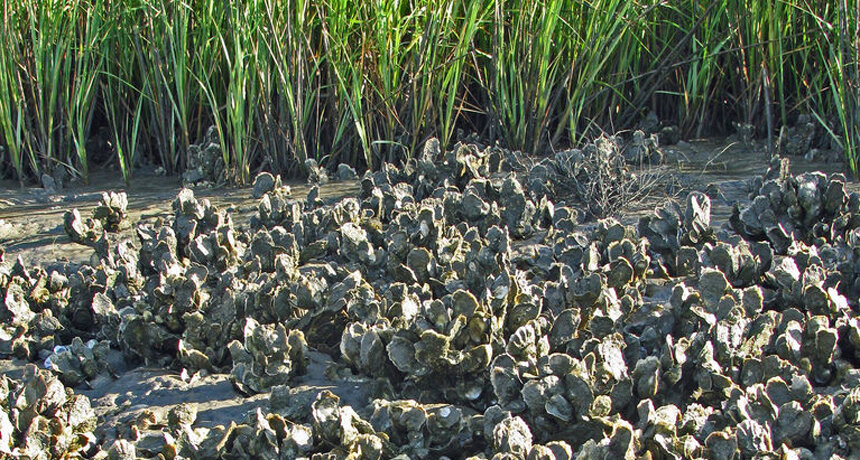Our Microplastic Nightmare
Let’s talk microplastics.
12.8 million tons of single use plastic are created each year, contributing to micro plastics.
Although microplastics have recently gained a lot of attention, they are not a new pollutant.
Mass production of plastic began in 1907 and thus, microplastic pollution was born…but what are microplastics?…and where are they?
The answers should alarm you.
“This small piece of polystyrene, or expanded foam, is an example of a microplastic.”-NOAA
Image credit: NOAA
The U.S. National Oceanic and Atmospheric Administration(NOAA) and the European Chemicals Agency defines microplastics as, “Very small pieces of plastic that pollute the environment. Microplastics are not a specific kind of plastic, but rather any type of plastic fragment that is less than 5 mm in length.”
For reference, 5mm is approximately the diameter of a No. 2 pencil eraser.
So where do we find microplastics?
Beauty manufactures use to put them in scrubs and tooth paste a disguise their name as “microbeads”.
These microbeads were made up of a plastic called polyurethane; and you guessed it, when rinsed down the drain, they ended up in our waters.
Thankfully, we now have the “Microbead Free Waters Act of 2015” to combat this from of water pollution. As of January 2018, the manufacture and sell of products containing microbeads became illegal. However, polyurethane is still in production.
Our microplastic nightmare is far from over.
All household (and street water) eventually end up in our oceans.
Polyester, nylon and acrylic are all types of plastics used to manufacture clothing, carpeting and other materials. When clothing made with these materials are washed, the microfibers (think: microplastics) are washed down the drain, straight to, you guessed it again, our water supply.
These tiny plastic particles are too small to be filtered out by our water filtration system.
The microplastics that escape the filtration system create a sludge that is then repurposed as fertilizer. The contaniminated fertilizer is then sprayed on our food sources. Some of the micro plastics will find their way into crops, and the others particles left on the soil, washed away by the rains back into our rivers, lakes and streams; eventually back to the ocean.
Marine life often mistake microplastics for food.
Microplastics have been found in the bellies of marine life ranging from plankton to whales.
When plastic is consumed by marine life, it stays in their stomachs because it does not digest. This creates a full feeling and they will unknowingly starve to death.
Albatross found dead with a belly full of plastic.
Credit: Chris Jordan
You are what you eat right? Maybe more truth to that than we realize. When our marine life consume microplastics, and we consume them, we are ingesting the microplastic.
It has been estimated that the average person ingests about a credit card’s worth of plastic each week!
Microplastics are in our seafood, sea salt, crops and air.
Oysters are the major natural filtration system for our oceans. Most notably known for their ability to remove nitrogen. Nitrogen is responsible for harmful algae blooms and is fueling global warming.
Microplastics are affecting our oysters.
An adult oyster has the ability to filter aproximately 50 gallons of water each day! When oysters are filtering water and take in microplastics, they recognize the plastic is not food and excrete it.
Although the plastic is excreted, the toxins from the plastic are absorbed by the oyster.
The toxins limit their ability to filter nitrogen, AND they produce offspring that are smaller and grow slower.
This results in less nitrogen being filtered over time.
More nitrogen—>more global warming.
Credit: Science News
While were on the topic of fertility, it is important to note that microplastics are also affecting human fertility.
Microplastics contain toxins which can interfere with hormones. These interferences could be linked to cancer, birth defects, and other developmental disorders.
When microplastics are consumed, the toxins in the plastics are absorbed.
Recent research has suggested that microplastics (containing their toxins) are breaking down in to small enough particles to be passed through the bloodstream.
This year, for the first time, scientists have detected microplastics in the human placenta.
The particles in the placentas ranged in size from .005mm to .01mm.
To help put this into perspective, a grain of salt is approximately .3mm, and the smallest particle detectable by the naked human eye is .06mm.
The plastic particles found are used in common house hold products. Their list included but was not limited to: paints (including finger paints), adhesives, cosmetics and personal care products (such as face creams, lipstick and foundations), fragrances and air fresheners.
The latter two suggest that microplastics can be airborne and pass into our bloodstream through the lungs.
For more information on this study please visit health.https://www.sciencedirect.com/science/article/pii/S0160412020322297
Manufactures are trying to rename microplastics with harmless sounding names, i.e: microbeads. We as consumers must be aware of the nicknames of plastic.
Microplastics are causing damage to our entire ecosystem. But there is hope.
Supporting organizations that remove trash and make laws protecting our waters goes a long way.
The more you and I are able to contribute to them, the more of a fighting chance our waterways have.
Check out our partners on our cleaning crews page and start protecting with us today!
You can also check out other blog “Our Time. For Sustainability.” to learn some plastic free swaps you can make today!
As always, we’d love to hear from you! Comment below to start the discussion.



